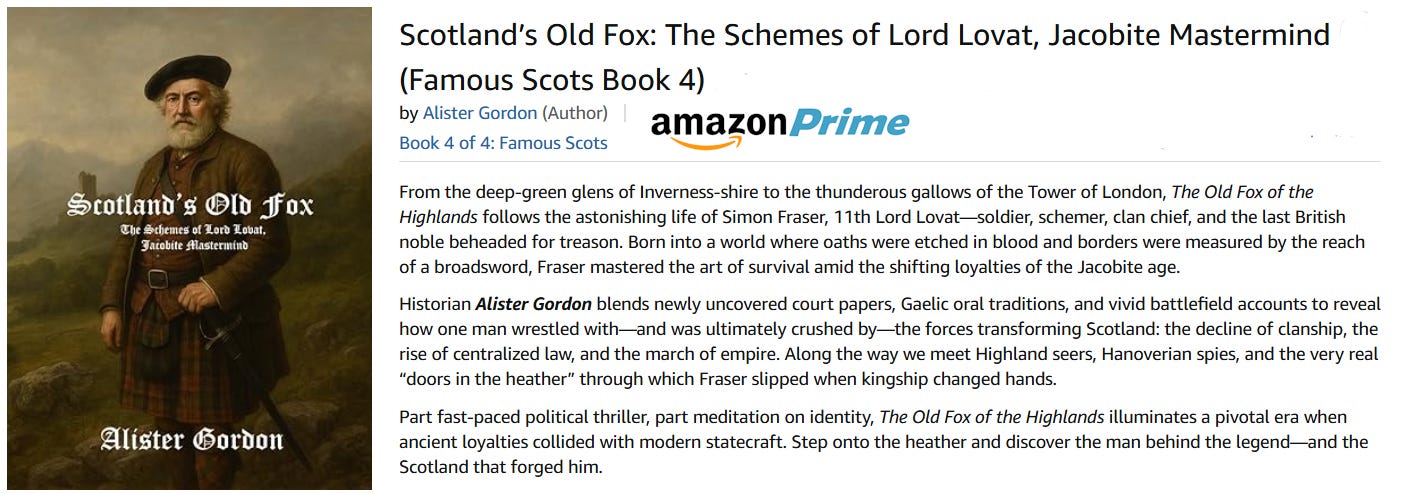Tower Hill, April 9 1747—A raw spring wind sliced across London as thousands jostled for a view of the last man in Britain ever to climb a scaffold wearing an ermine-trimmed peer’s coat.
Simon Fraser, 11th Lord Lovat—nicknamed “The Old Fox”—had spent a lifetime switching sides, spinning lies, and surviving clan vendettas. But that chilly morning, the game was up: convicted for backing Bonnie Prince Charlie in the ’45, he was minutes from losing his head.
Yet it was the crowd, not the condemned, that first tasted disaster.
The Great Collapse
Authorities expected a spectacle and built grandstands to sell seats—early-modern VIP boxes for the morbidly curious. As Lovat mounted the steps, a rotten brace beneath the packed bleachers splintered. Crash. Timbers buckled. Screams rose. A mass of onlookers tumbled 25 feet, leaving at least nine dead and scores bloodied.
Eyewitnesses braced for hysteria. Instead, they heard a dry chuckle from the platform. Lovat, unfazed, quoted Horace:
“Dulce et decorum est pro patria mori.”
It is sweet and fitting to die for one’s country.
Then—ever the wit—he added in Scots, “The mair the merrier.”
The Old Fox had just delivered the blackest punch line in Hanoverian England.
Why He Laughed
Fraser’s grisly humor wasn’t mere bravado. For 80 years he’d thrived on chaos:
Kidnapper-in-chief – At 21 he abducted the Dowager Lady Beaufort to seize an inheritance, igniting lawsuits that spanned decades.
Triple turn-coat – He toasted the Stuarts in 1715, swore loyalty to George I in 1716, then plotted for Prince Charlie in 1745.
Master illusionist – Faked paralysis to avoid arrest, dispatched identical letters pledging loyalty to both sides before Culloden, and once smuggled himself through enemy lines disguised as a washer-woman’s assistant.
Chaos was the elemental fog in which he hunted. When the bleachers gave way, fate presented him one final absurdity—and he couldn’t resist a laugh.
The Execution That Echoed
Moments later the axe fell, and London’s gossip mills spun for weeks. Satirical prints showed foxes in tartan; pamphleteers decried “Highland perfidy.” But in the glens of Inverness-shire, folk songs celebrated a chief who met death chuckling while his enemies lay crushed at his feet.
Three centuries on, the disaster still ripples through historical trivia lists—yet few know the wider saga: How did this schemer hold two monarchs hostage to his loyalties? What secret bargain did he strike with the Duke of Cumberland? Why did the Crown really spare his lands?
Those stories—and the newly unearthed letters that answer them—form the beating heart of Scotland’s Old Fox, our new narrative biography of Simon Fraser.






